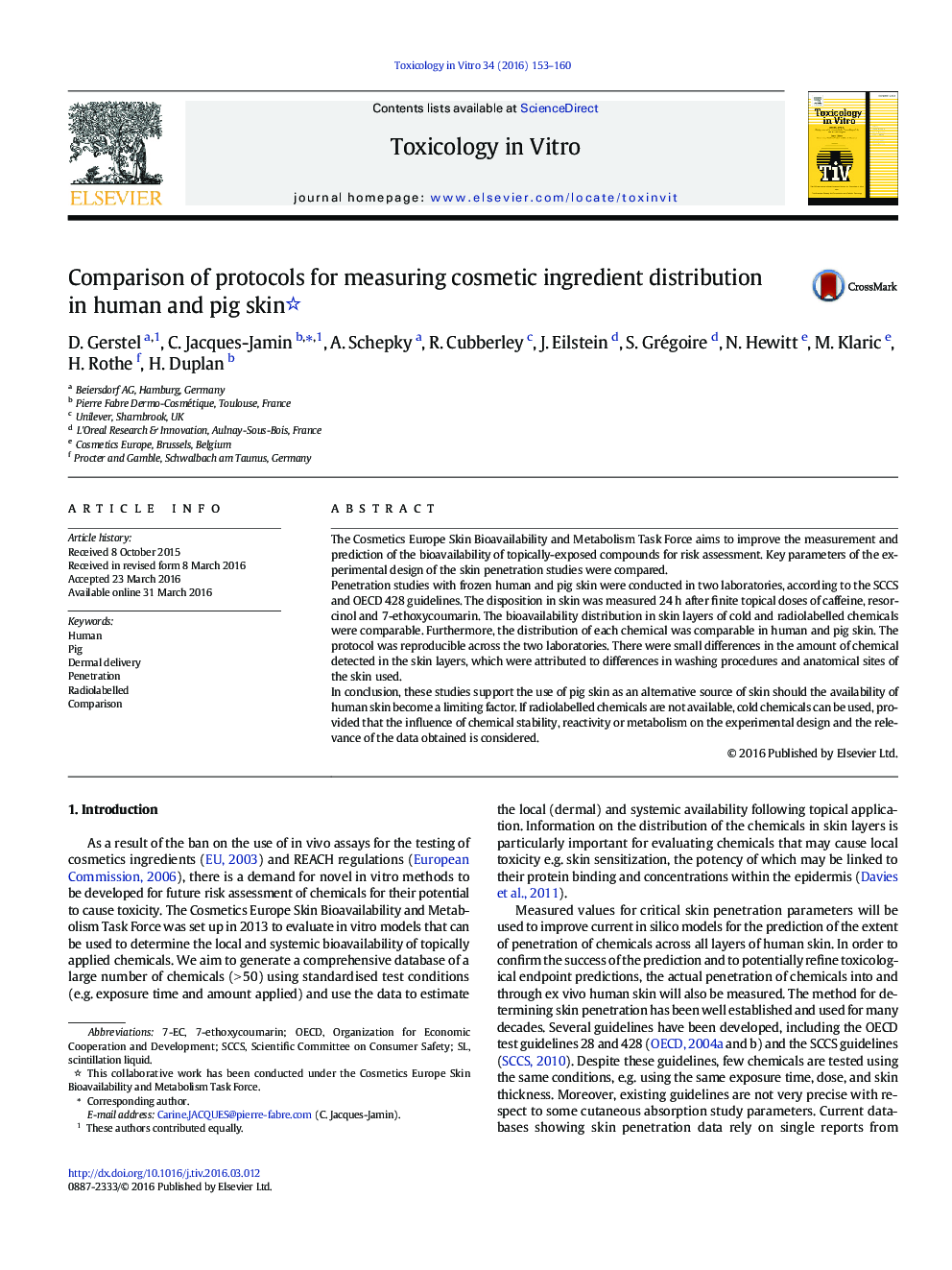| کد مقاله | کد نشریه | سال انتشار | مقاله انگلیسی | نسخه تمام متن |
|---|---|---|---|---|
| 5861113 | 1562711 | 2016 | 8 صفحه PDF | دانلود رایگان |

- We aim to improve the measurement and prediction of the bioavailability of topically-exposed compounds for risk assessment.
- Key parameters of the experimental design of skin penetration studies were compared.
- The bioavailability distribution in skin layers of cold and radiolabelled chemicals were comparable.
- The distribution of each chemical was comparable in human and pig skin.
- The protocol used was reproducible across two laboratories.
The Cosmetics Europe Skin Bioavailability and Metabolism Task Force aims to improve the measurement and prediction of the bioavailability of topically-exposed compounds for risk assessment. Key parameters of the experimental design of the skin penetration studies were compared.Penetration studies with frozen human and pig skin were conducted in two laboratories, according to the SCCS and OECD 428 guidelines. The disposition in skin was measured 24Â h after finite topical doses of caffeine, resorcinol and 7-ethoxycoumarin. The bioavailability distribution in skin layers of cold and radiolabelled chemicals were comparable. Furthermore, the distribution of each chemical was comparable in human and pig skin. The protocol was reproducible across the two laboratories. There were small differences in the amount of chemical detected in the skin layers, which were attributed to differences in washing procedures and anatomical sites of the skin used.In conclusion, these studies support the use of pig skin as an alternative source of skin should the availability of human skin become a limiting factor. If radiolabelled chemicals are not available, cold chemicals can be used, provided that the influence of chemical stability, reactivity or metabolism on the experimental design and the relevance of the data obtained is considered.
Journal: Toxicology in Vitro - Volume 34, August 2016, Pages 153-160